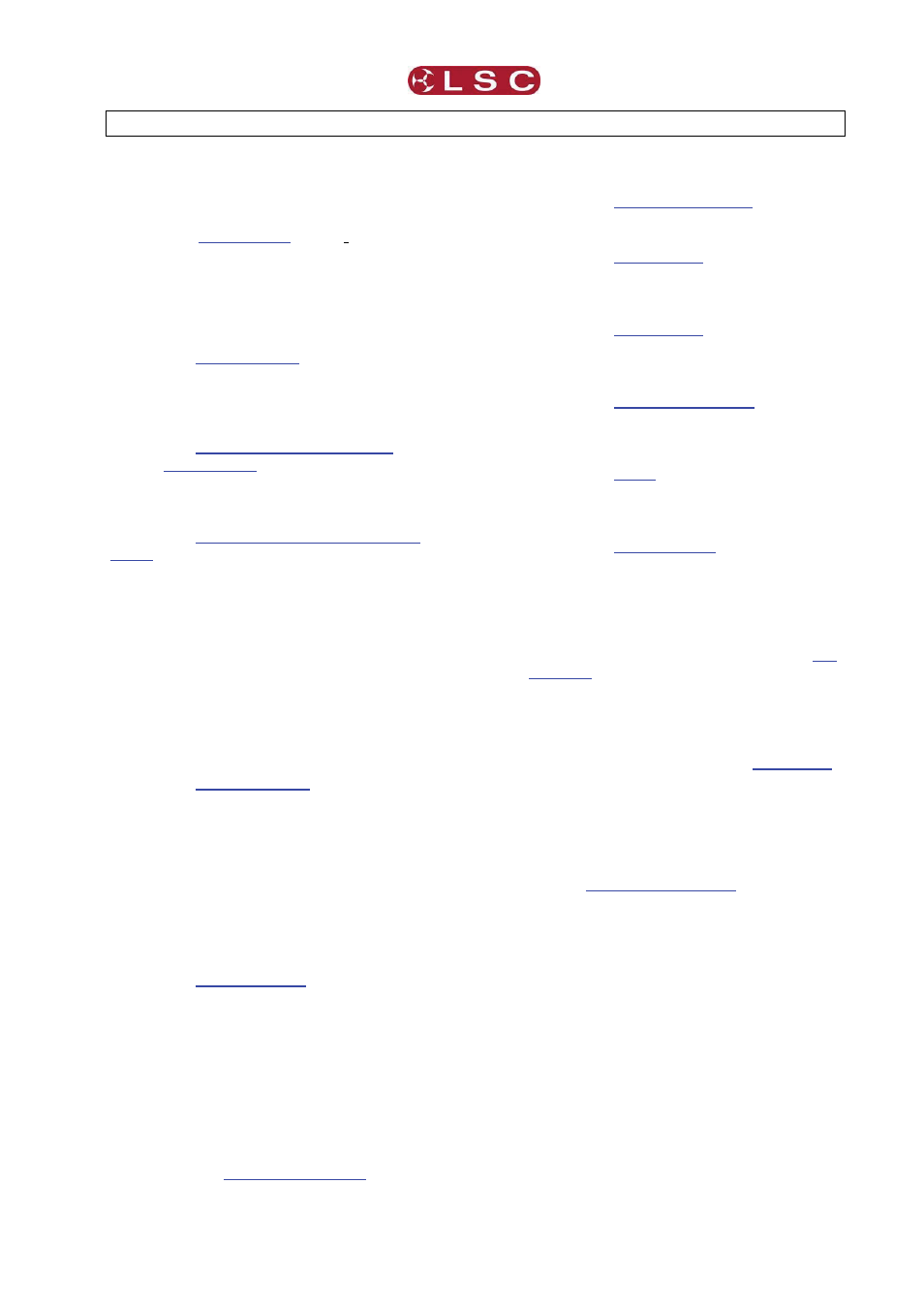4 dimmer configuration, 1 dimmer control source, 2 patching – LSC Lighting TEKO User Manual
Page 9: 3 optional settings, 4 testing, Dimmer configuration

TEKO Dimmer
Operator Manual V3.0
4 Dimmer Configuration
The TEKO dimmer needs to be configured to
suit its particular application. This involves the
following operations which are achieved via the
touch screen menus. The menu system is fully
described in
section.
4.1 DIMMER CONTROL SOURCE
Each dimmer channel needs to be configured for
the “Control Source” that will drive it. This could
be either DMX, Memory or SWITCH (switch-
able between Memory or DMX).
See section
The SWITCH (above) can be manually operated
either locally from the LCD touch screen or
remotely from an ePlate.
See section
section
.
The SWITCH can be automatically operated by
the presence or absence of DMX.
See section
.
Note: If “Control Source” is not available on
the menu then either “Net Playback” has
been disabled from the “Options” menu.
When “Net Playback” is disabled, it forces all
dimmer channels to DMX control.
4.2 PATCHING
Dimmer channels set to DMX or Switch Mode,
may need to be patched to the DMX slot number
that is to control them.
Refer to the
Recording Memories
Dimmer channels set to Memory Mode, are
controlled by the memories (up to 80 memories)
saved in each TEKO. These memories are
created and saved in the TEKO using the LCD
touch screen or by taking a snapshot of the
DMX input. The ePlates (wall plates) must also
be programmed to recall the required memories.
See section
4.3 OPTIONAL SETTINGS
In addition to these settings you can also set the
following optional parameters;
Selecting the dimmer action of DMX
controlled channels when the DMX signal is
connected or lost including the saving of a
Backup Memory.
See section
Selecting minimum and maximum levels for
each dimmer.
See section
Selecting a fade curve for each dimmer.
See section
Setting each dimmer to either Dim (dimmer)
or Switch (between OFF or fully ON).
See section
Setting a “lock code” to prevent
unauthorised access to the TEKO menu.
See section
Naming the Dimmer. Useful in large
installations to identify each TEKO.
See section
Setting the date and time (for the TEKO
status log).
See section
If
the
TEKO is ONLY to be controlled by
DMX then the Memory control by ePlates via
LSC net can be disabled. This simplifies the
menu system and forces all dimmer
channels to DMX control. See section
The DMX alarm delay time can be set or the
alarm can be disabled. Disabling the alarm
is useful when the TEKO is never to be
controlled by DMX. See section
.
4.4 TESTING
The operation of each dimmer circuit can be
tested from the LCD touch screen.
Refer to the
LSC Lighting Systems (Aust) Pty. Ltd
Page
7
